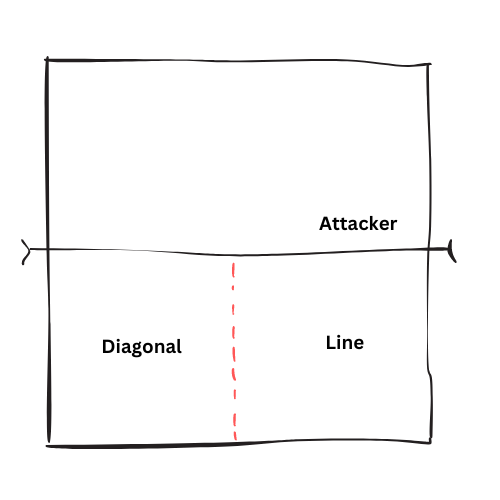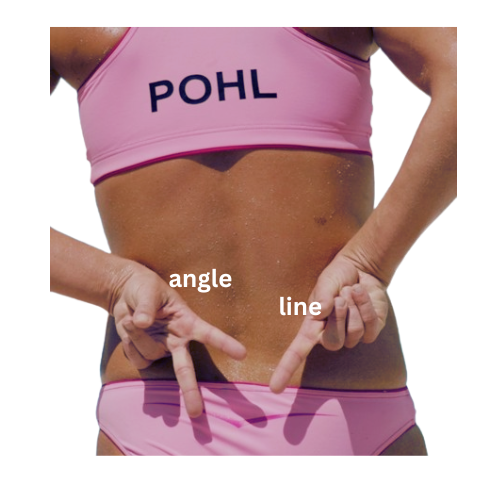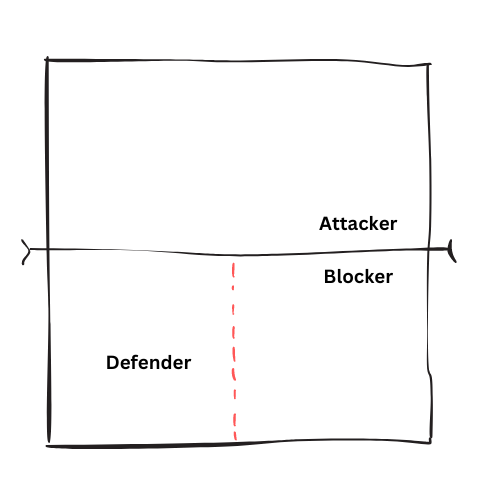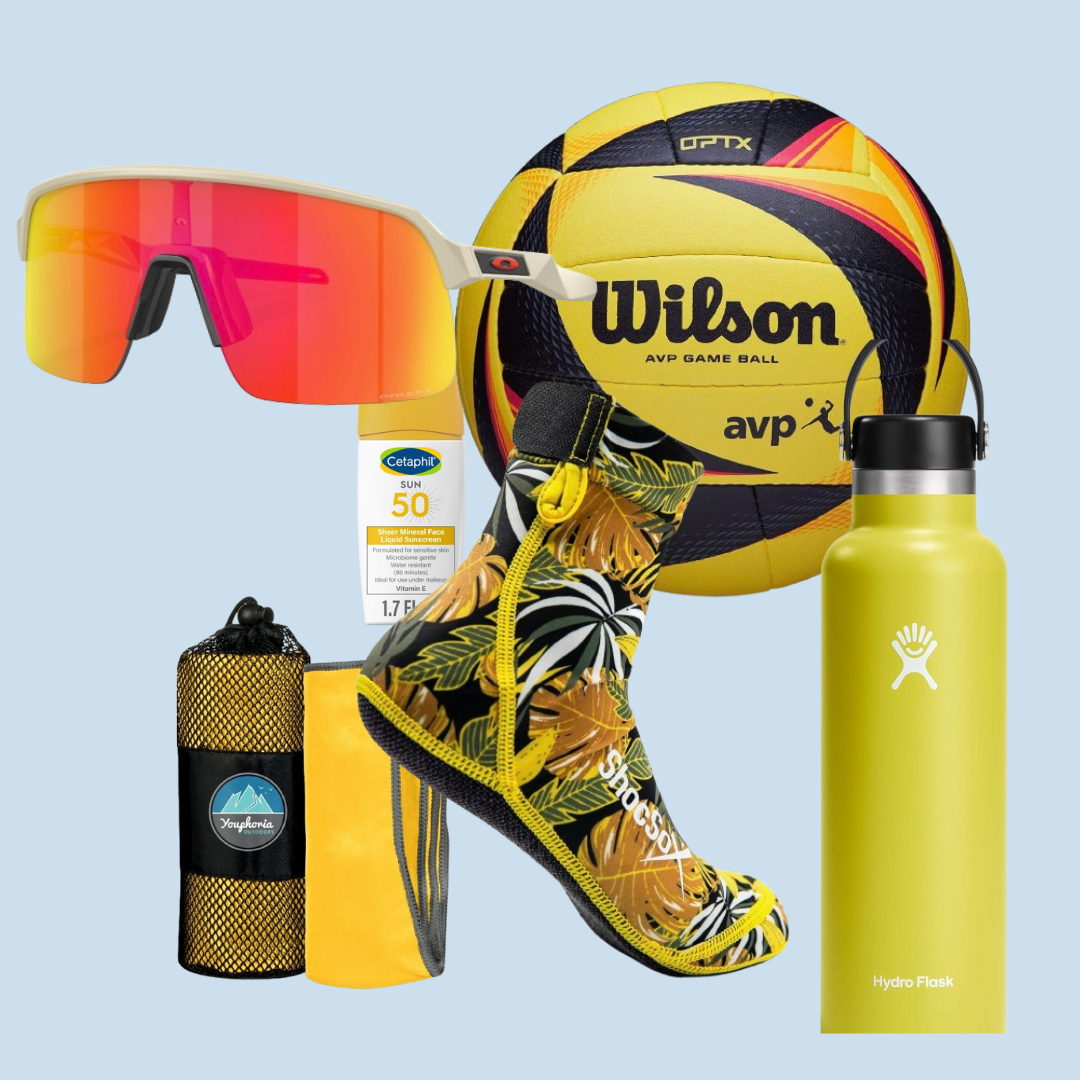Decoding Signals: Key Concepts of Hand Signaling in Beach Volleyball
Before we get started, let’s grasp some fundamental concepts.
In beach volleyball, covering 64 square meters of sand with just two players is a formidable challenge, even for top athletes. Defensive tactics revolve around deciding which areas of the court to commit to and which to leave open. While skilled players can chase down and dig balls to the open court, there are inevitably uncovered zones where a well-placed shot is likely to land.
Commonly, defensive strategies divide the court into halves—right and left—assigning one player to cover the attacker’s line and the other the diagonal. However, at higher skill levels, attackers’ versatility makes it impractical for a defender or blocker to cover an entire half.

When Do Players Employ Hand Signaling in Beach Volleyball
In beach volleyball, players use hand signals in two scenarios. The first occurs before serving, where the non-serving player signals the server with both hands—one for each teammate. This pre-serve communication helps coordinate the serving strategy and ensures a synchronized effort between players on the court.

Additionally, hand signals in beach volleyball can indicate the desired serving location. The serving player may use one hand or point at one hand to convey the intended target, providing a strategic element to the serve.

In transition play, another instance of hand signaling occurs when the opponent successfully digs a ball and prepares to attack. In this scenario, the blocker swiftly moves to the net and signals the defender about the preferred defensive strategy. Unlike the pre-serve signal, only one hand is used this time, as the attacking player would most likely be the one who just dug the ball. This real-time communication is essential for a coordinated defensive response.
Basics of Line Defense

Line defense stands out as the most prevalent and straightforward tactic in beach volleyball. In this strategy, the defender takes responsibility for the diagonal, while the blocker covers the line. The vulnerable area, known as the open court, lies in the line shot above the blocker. This uncomplicated yet effective approach is commonly employed to counter opponents’ attacks and secure the court strategically.

In this defensive setup, the blocker dedicates efforts to obstructing powerful shots towards the line. As an added layer, they aim to anticipate and respond to potential line shots by adjusting their jump timing, attempting a swat, or swiftly dropping from the net.
Concurrently, the defender strategically positions themselves to effectively dig both hard-driven balls targeting the diagonal and well-placed cut shots. This collaborative approach between the blocker and defender maximizes defensive coverage against varied attacks.
In the line defense strategy, the open court vulnerability lies in the line shot above the blocker. Defending this shot hinges on specific conditions: if the line shot is low enough for the blocker to reach, they can attempt to deflect it; conversely, if it’s high, the defender may have an opportunity to chase it down.
However, the real challenge comes with a well-placed and cleverly disguised line shot. In such cases, it’s more likely to find the sand, which is a crucial factor to consider when opting for a line defense strategy.
Basics of Angle Defense
Angle defense is the opposite of the line defense. In this defensive strategy the blocker takes responsibility for the diagonal, and the defender covers the line.

In this defensive scheme, the blocker assumes the role of intercepting powerful shots directed towards the diagonal. If the blocker opts to pull from the net, they’ll drop to cover the diagonal court. Simultaneously, the defender positions themselves closer to the line, adept at handling shots and hits to that specific area.
The open vulnerability in this defensive strategy is the diagonal shot above the blocker.
Timing is pivotal in this defensive strategy. Both the blocker and defender must delay their movements to their respective positions, ensuring the opponent team notices the defense too late. This strategic delay increases the likelihood of the opponent making an erroneous shot, adding a crucial element to the effectiveness of the defensive play.
Additional Hand Signals in Beach Volleyball
Beyond the prevalent line and angle defense strategies, some teams employ various additional tactics. A notable example is the use of a fist signal, indicating the blocker’s intention to drop from the net unless the set is close. Conversely, an open hand often implies each player acts situationally. Advanced variations like “Three” and “Four” (representing three and four fingers) involve intricate movements, with the blocker and defender incorporating deceptive actions before settling into their designated defensive positions.
How Teams Choose Their Defensive Tactics
Understanding when to employ each defensive strategy is a skill that develops over time. It requires considering the preferences of the opposing attacker and the overall game situation.
For many teams, utilizing a line defense serves as the default strategy in most situations. It proves effective, especially against opponents with unknown attacking strategies. If the attacker struggles to score against a line defense consistently, there’s usually no need to change it unless proven otherwise. However, if the opponent adeptly handles the line defense, showcasing skill in executing line shots, forceful crosses, or well-placed cuts, it becomes prudent to consider implementing an angle defense. This variation is particularly advantageous against players with limited court vision.
An additional scenario where an angle defense shines is during transition play. After the opponent digs the ball, there’s a higher likelihood of them attempting shots to the line or hits to the diagonal. Many successful teams opt for an angle defense in these situations, increasing their chances of reclaiming possession.
Notably, Laura Ludwig, in her book, emphasizes dedicating the initial points of the game to observe and record the opponent’s attacking decisions, creating a mental database. This information proves invaluable later in the game, aiding in reading the attacker and devising effective defensive strategies against them.
Final Thoughts
Hand signaling in beach volleyball is not merely a form of communication; it’s a strategic language that teams use to synchronize their movements and counter their opponents effectively. From the nuanced pre-serve signals to the real-time communication during transition plays, the art of signaling adds a layer of coordination and anticipation to the game.


